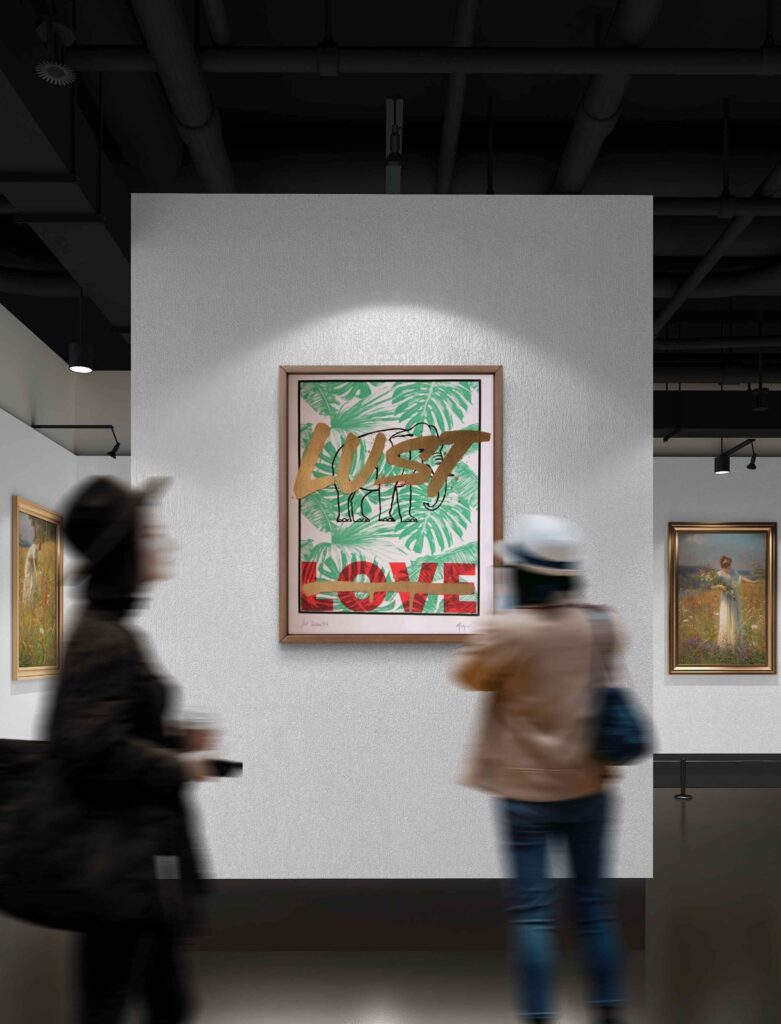Street Art’s Dark Satirist with a Sharp British Wit
In the ever-evolving world of street art, where bold visuals meet bold ideas, Minty stands out as a singular voice: razor-sharp, politically pointed, and deliciously irreverent. Operating anonymously like many of his contemporaries, Minty is a UK-based street artist whose works challenge power, mock hypocrisy, and inject social commentary into public space with surgical precision.
Heavily influenced by punk aesthetics, classic advertising, and agitprop posters, Minty’s work sits at the intersection of satire and subversion. Often compared to artists like Banksy or Blek le Rat, Minty sets himself apart through a distinct collage-like style, dark humor, and an emphasis on media manipulation and consumer culture. His posters and paste-ups—found across cities in the UK and beyond—are immediate, eye-catching, and frequently unsettling.
Whether taking aim at surveillance, capitalism, nationalism, or climate denial, Minty uses the street as a stage to ask the uncomfortable questions—and often, to mock the answers.

Untitled 54 (2019)
Edition of 20
Screen Print
A Brief History of Minty
While details about Minty’s personal identity remain scarce—by design—his presence in the street art world has been steadily growing since the early 2010s. Based primarily in the UK, Minty began pasting provocative images and texts in high-visibility urban areas: lamp posts, electrical boxes, building sites, and bus stops. These weren’t simply murals or decorative graffiti—they were visual statements, crafted to disrupt routine with sharp commentary.
Much of Minty’s early output involved posters and paste-ups—a nod to old-school protest art and D.I.Y. punk zines. His materials often reflect this ethos: paper, glue, bold fonts, repurposed commercial graphics, and cut-and-paste juxtapositions that create ironic or dystopian twists on familiar imagery.
Over time, Minty’s aesthetic became more refined, and his voice more distinctive. While the artist has never sought commercial fame, his work has been exhibited in group shows and gained a loyal following on social media, where it’s widely shared for its unflinching relevance and biting sarcasm.
Despite operating in the shadow of more famous anonymous artists, Minty has carved out his own space as a provocateur and political commentator, using the city as both canvas and battleground.
Why Minty Is Important
Minty is important because he revives the spirit of protest art in a time when dissent is often filtered through digital platforms and dulled by algorithms. His work refuses to be polite or decorative; it’s designed to provoke, disrupt, and demand attention in the real world.
He tackles a broad range of pressing issues:
- State surveillance and the erosion of privacy
- Climate change denialism and corporate greenwashing
- Consumer addiction and branding culture
- Media manipulation and misinformation
- Political populism and right-wing extremism
Through his sardonic lens, Minty takes on the absurdities of power structures and societal norms, pulling no punches. His art speaks directly to the public, bypassing the traditional gallery system and inserting critical commentary into everyday life.
In an era marked by disinformation, apathy, and media fatigue, Minty’s work reclaims visual space to wake people up, to reframe what we think we know, and to puncture the narratives of comfort and control. He is, in a way, a contemporary visual activist—armed with glue, wit, and a well-honed sense of outrage.
The Significance of Minty’s Style
Minty’s artistic style is immediately recognizable for its collage-like, cut-and-paste aesthetic, blending influences from:
- Vintage advertisements and corporate branding
- Punk zines and protest posters
- Political propaganda from the 20th century
- Modern social media graphics and internet culture
Often working in monochrome or two-color palettes, Minty’s designs feature bold typography, stark imagery, and ironic slogans. He uses contradiction, parody, and visual recontextualization to turn familiar icons into instruments of critique.
Examples of his recurring stylistic elements include:
- Reworked images of smiling businessmen, soldiers, or celebrities, paired with sinister or absurd captions.
- Juxtapositions of corporate logos with dystopian or anti-capitalist themes.
- Orwellian slogans repurposed to reflect modern surveillance culture.
- Pop-cultural references twisted into dark political satire.
What makes his style powerful is its urgency. It feels ripped from a manifesto, spray-mounted on the wall during a riot. His paste-ups have a temporary, almost disposable quality, which reflects the disposable nature of much of what they critique. This transience makes each piece feel even more vital and timely—like a visual flare warning us of what’s to come.
Unlike more polished or gallery-oriented street art, Minty’s style is designed to blend with the noise of the street, only to shock viewers once they take a closer look.
Cultural and Artistic Impact
While Minty may not be a household name, his impact in the underground and street art communities is undeniable. His art circulates widely through urban photography, social media reposts, and independent art publications. Collectors and curators of contemporary street art have increasingly recognized Minty’s contributions to the political street art movement of the 2010s and 2020s.
His presence is especially notable in UK cities, where his satirical approach often draws attention to issues of nationalism, surveillance, and the post-Brexit identity crisis. In this way, Minty becomes not just a critic of global capitalism, but a witness to and commentator on contemporary British life.
Unlike more commodified street artists, Minty retains a guerrilla ethic. His work is not about self-branding, merchandise, or commercial crossover—it’s about agitational art in the truest sense. In doing so, he keeps alive the legacy of politically motivated street art, reminding viewers that art can be more than aesthetic—it can be revolutionary.
Conclusion
By combining the immediacy of street art with the sharpness of political satire, Minty offers a scathing critique of modern life—served with a crooked smile. His anonymous presence and DIY spirit make his work feel raw, real, and uncompromised.
In a culture where art is increasingly polished and commodified, Minty’s work remains a sharp reminder that the street still belongs to the people—and that art still has the power to offend, awaken, and agitate.